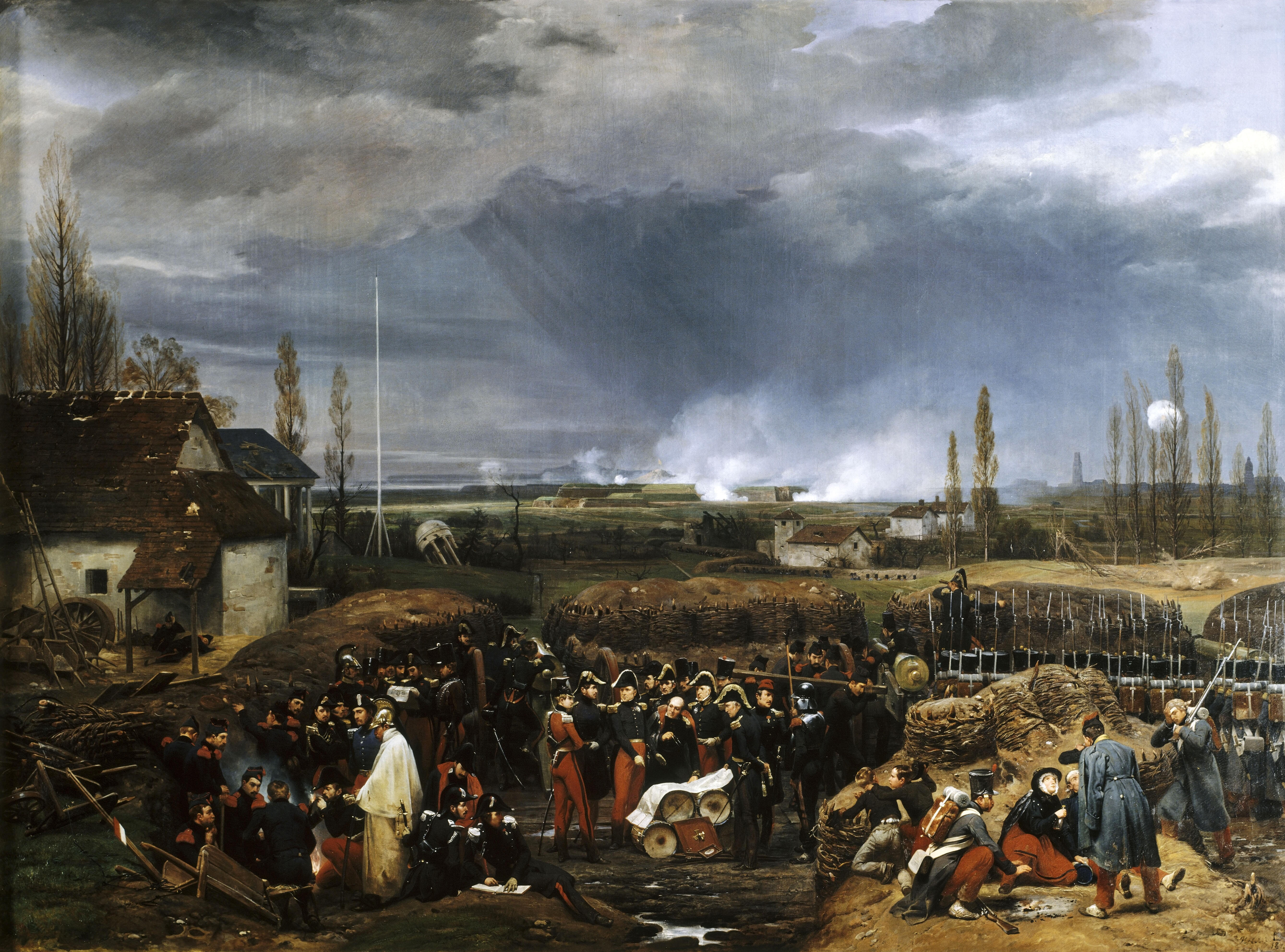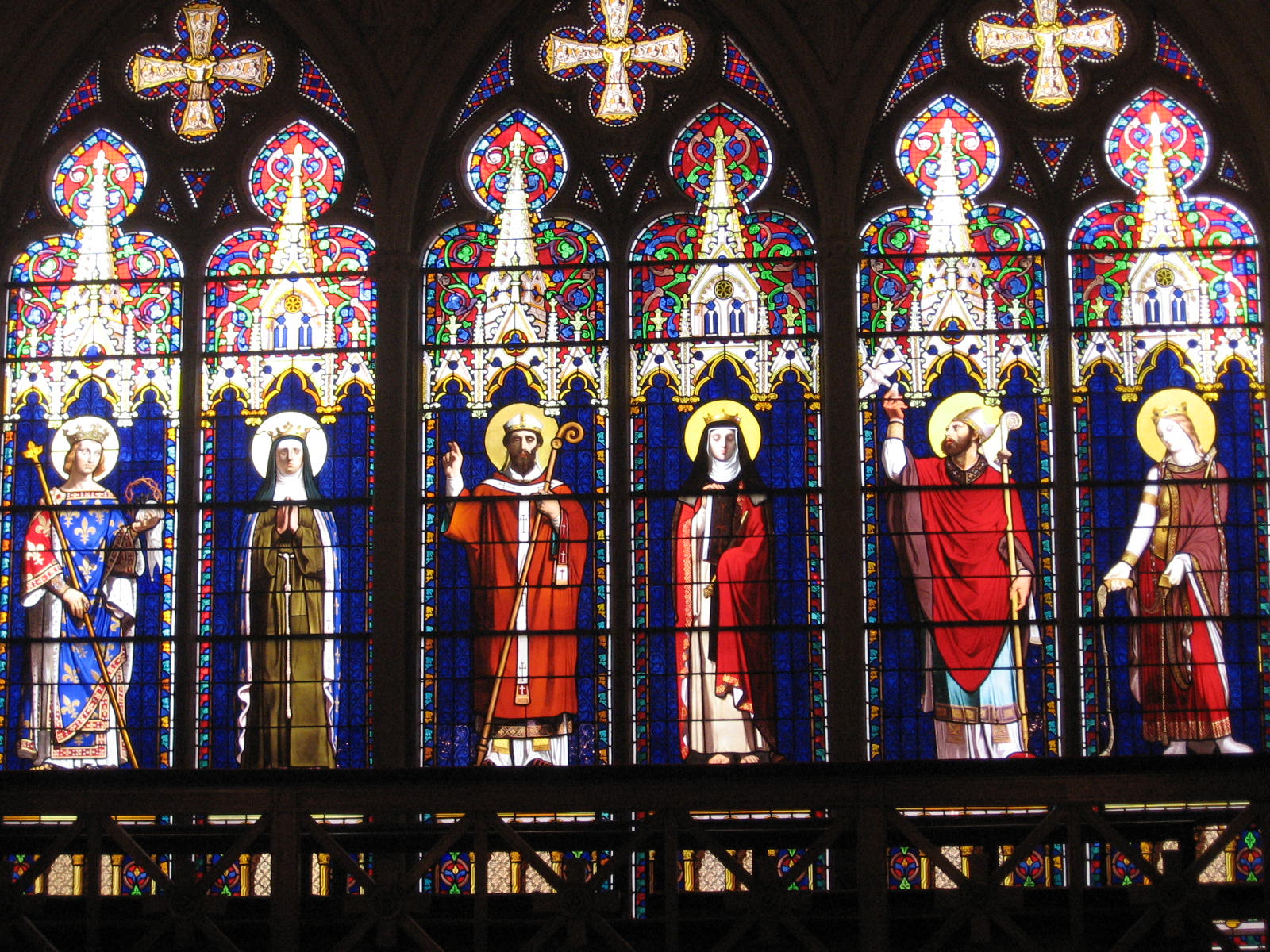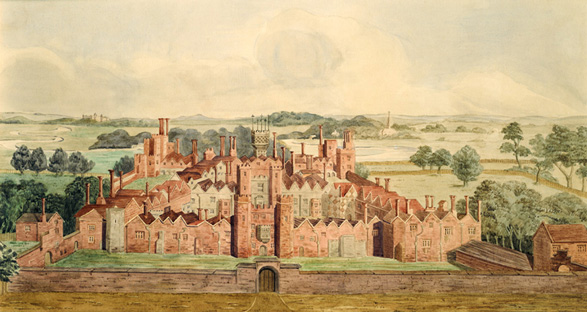|
Louis Philippe
Louis Philippe I (6 October 1773 – 26 August 1850), nicknamed the Citizen King, was King of the French from 1830 to 1848, the penultimate monarch of France, and the last French monarch to bear the title "King". He abdicated from his throne during the French Revolution of 1848, which led to the foundation of the French Second Republic. Louis Philippe was the eldest son of Louis Philippe II, Duke of Orléans (later known as Philippe Égalité). As Duke of Chartres, the younger Louis Philippe distinguished himself commanding troops during the French Revolutionary Wars and was promoted to lieutenant general by the age of 19 but broke with the First French Republic over its decision to execute King Louis XVI. He fled to Switzerland in 1793 after being connected with a plot to restore France's monarchy. His father fell under suspicion and was executed during the Reign of Terror. Louis Philippe remained in exile for 21 years until the Bourbon Restoration. He was proclaimed king ... [...More Info...] [...Related Items...] OR: [Wikipedia] [Google] [Baidu] |
Portrait Of Louis Philippe I (Winterhalter)
''Portrait of Louis Philippe I'' is an 1841 portrait painting by the German artist Franz Xaver Winterhalter depicting the French monarch Louis Philippe I. Winterhalter was rapidly emerging as one of the most fashionable portrait painters in Europe and had numerous royal sitters that year alone. His painting of Louis Philippe was a celebration of the king's role in the restoration and reopening of the Palace of Versailles as a Musée de l'Histoire de France (Versailles), Museum of French History. He is shown in the uniform of a major general with the Galerie des Batailles behind him. His hand rests on the architectural plans for the gallery and nearby is a statuette of Joan of Arc created by his daughter Princess Marie of Orléans (1813–1839), Princess Marie. Today the painting is in collection of Versailles having been acquired in 1975. It recreates the pose from an earlier portrait by Winterhalter with a different background. See also * ''Portrait of Louis Philippe I (Gérard) ... [...More Info...] [...Related Items...] OR: [Wikipedia] [Google] [Baidu] |
Prime Minister Of France
The prime minister of France (), officially the prime minister of the French Republic (''Premier ministre de la République française''), is the head of government of the French Republic and the leader of its Council of Ministers. The prime minister is the holder of the second-highest office in France, after the president of France. The president, who appoints but cannot dismiss the prime minister, can request resignation. The Government of France, including the prime minister, can be dismissed by the National Assembly. Upon appointment, the prime minister proposes a list of ministers to the president. Decrees and decisions signed by the prime minister, like almost all executive decisions, are subject to the oversight of the administrative court system. Some decrees are taken after advice from the Council of State (), over which the prime minister is entitled to preside. Ministers defend the programmes of their ministries to the prime minister, who makes budgetary choices. ... [...More Info...] [...Related Items...] OR: [Wikipedia] [Google] [Baidu] |
Princess Clémentine Of Orléans
Princess Clémentine of Orléans () (3 June 1817 – 16 February 1907), princess of Saxe-Coburg and Gotha and duchess in Saxony, was the sixth child and youngest daughter of Louis-Philippe I, List of French Monarchs, King of the French, and his wife Maria Amalia of the Two Sicilies. She was the mother of Ferdinand I of Bulgaria, Ferdinand I, Tsar of Bulgaria. Early life Marie Clémentine Léopoldine Caroline Clotilde of Orléans, styled ''Mademoiselle de Beaujolais'', was born on 3 June 1817 at the Château de Neuilly, in Neuilly-sur-Seine, France, soon after the Bourbon Restoration in France, Bourbon Restoration. She became a royal princess, ''Princess of Orléans'', following her father's July Monarchy, ascension to the French throne in 1830. As a young woman, it was written that she "is represented to possess great beauty and accomplishments." Clémentine was taught history by the radical historian Jules Michelet, who would spend lessons glorifying the French Revolution to his ... [...More Info...] [...Related Items...] OR: [Wikipedia] [Google] [Baidu] |
Prince Louis, Duke Of Nemours
Prince Louis of Orléans, Duke of Nemours (Louis Charles Philippe Raphaël d'Orléans; 25 October 1814 – 26 June 1896) was the second son of King Louis-Philippe I of France, and his wife Maria Amalia of Naples and Sicily. Life Childhood He was born at the Palais Royal, in Paris. At twelve years of age, he was nominated colonel of the First Regiment of Chasseurs, and in 1830 entered the '' Chambre des Pairs''. As early as 1825, while revolutionaries were still engaged in the Greek War of Independence, attempting to establish a Kingdom of Greece (which transpired with the London Conference of 1832), Louis' name was mentioned as a possible candidate as the first modern King of Greece. In February 1831, five months before revolutionaries succeeded in the Belgian Revolution, which established the Kingdom of Belgium, Louis was nominated to be the first King of the Belgians; international considerations deterred Louis-Philippe from accepting the honour for his son. Prince ... [...More Info...] [...Related Items...] OR: [Wikipedia] [Google] [Baidu] |
Princess Marie Of Orléans (1813–1839)
Princess Marie of Orléans (12 April 1813 – 6 January 1839) was a French princess, artist, and, by her marriage, duchess of Württemberg (1837). Before her marriage, she was styled ''Mademoiselle de Valois''. Biography She was the third child (and second daughter) of Louis-Philippe, King of the French, and his wife Maria Amalia, daughter of King Ferdinand IV of Naples. She was solidly educated on her father's insistence, and took up sculpture and drawing. She had her own studio installed in the Tuileries Palace in which she would work. She was described as a lively character with great energy, interested in both parties and politics. At the beginning of 1834, due to the consolidation of the July Monarchy and a better acceptance of Louis-Philippe by the monarchs of Europe, the King of the Two Sicilies, Ferdinand II, gave his consent to the marriage of princess Marie of Orléans with one of his younger brothers. Leopold of the Two Sicilies (1813–1860), count of Syracu ... [...More Info...] [...Related Items...] OR: [Wikipedia] [Google] [Baidu] |
Louise Of Orléans
Louise of Orléans (Louise-Marie Thérèse Charlotte Isabelle; 3 April 1812 – 11 October 1850) was the first Queen of the Belgians as the second wife of King Leopold I from their marriage on 9 August 1832 until her death in 1850. She was the second child and eldest daughter of the French king Louis Philippe I and his wife, Maria Amalia of the Two Sicilies. Louise rarely participated in public representation, but acted as the political adviser of her spouse. Her large correspondence is a valuable historical source of the period and has been published. Life Born in Palermo, Sicily, on 3 April 1812, she was the eldest daughter of the future Louis-Philippe I, King of the French, and of his wife Maria Amalia of the Two Sicilies. As a child, she had a religious and ''bourgeoisie'' education thanks to the part played by her mother and her aunt, Princess Adélaïde of Orléans, to whom she was very close. She was given a strict religious upbringing by her aunt. She also l ... [...More Info...] [...Related Items...] OR: [Wikipedia] [Google] [Baidu] |
Prince Ferdinand Philippe, Duke Of Orléans
Prince Ferdinand Philippe, Duke of Orléans (Ferdinand Philippe Louis Charles Henri Joseph; 3 September 1810 – 13 July 1842) was the eldest son of King Louis Philippe I of France and Maria Amalia of Naples and Sicily. He was born in exile in his mother's native Sicily while his parents were the Duke and Duchess of Orléans. Ferdinand Philippe was heir to the House of Orléans from birth. Following his father's succession as King of the French in 1830, he became the Dauphin of France, Prince Royal of France and Duke of Orléans. He died in 1842, never to succeed his father or see the collapse of the July Monarchy and subsequent exile of his family to the United Kingdom. Early life Born in Palermo in September 1810, during his parents' exile, he was given the title Duke of Chartres (and was called ''Chartres'' within the family circle). He was baptised ''Ferdinand Philippe Louis Charles Henri Joseph'' and known as Ferdinand Philippe in honour of his grandfathers, Ferdinand I of ... [...More Info...] [...Related Items...] OR: [Wikipedia] [Google] [Baidu] |
Maria Amalia Of Naples And Sicily
Maria Amalia of Naples and Sicily (Maria Amalia Teresa; 26 April 1782 – 24 March 1866) was List of French royal consorts, Queen of the French by marriage to Louis Philippe I, King of the French. She was the last Queen of France. Among her grandchildren were the monarchs Leopold II of Belgium, Carlota of Mexico, Empress Carlota of Mexico, with whom Maria Amalia regularly corresponded while she was in Second Mexican Empire, Mexico, Ferdinand I of Bulgaria, and Mercedes of Orléans, Queen Mercedes of Spain. Early years Maria Amalia was born on 26 April 1782 at the Caserta Palace just outside Naples. She was the tenth of eighteen children of Ferdinand I of the Two Sicilies and Maria Carolina of Austria. As a young Italian princess, she was educated in the Catholic tradition, which she appears to have taken to heart. Maria Carolina, like her mother, Maria Theresa,Dyson. C.C, ''The Life of Marie Amelie Last Queen of the French, 1782–1866'', BiblioBazaar, LLC, 2008, p. 50. ... [...More Info...] [...Related Items...] OR: [Wikipedia] [Google] [Baidu] |
Chapelle Royale De Dreux
The Royal Chapel of Dreux () situated in Dreux, France, is the traditional burial place of members of the House of Orléans. It is an important early building in the French adoption of Gothic Revival architecture, despite being topped by a dome. Starting in 1828, Alexandre Brogniart, director of the Sèvres porcelain manufactory, produced fired-enamel paintings on large panes of plate glass for King Louis-Philippe I, an important early French commission in Gothic Revival taste, preceded mainly by some Gothic features in a few '' jardins paysagers''. Background In the 1770s, Louis Jean Marie de Bourbon, Duke of Penthièvre, was one of the greatest land owners in France prior to the French Revolution. In 1775, the lands of the county of Dreux had been given to Penthièvre by his cousin King Louis XVI. In 1783, Penthièvre sold his domain of Rambouillet to Louis XVI. On November 25 of that year, in a long religious procession, Penthièvre transferred the nine caskets containing ... [...More Info...] [...Related Items...] OR: [Wikipedia] [Google] [Baidu] |
Weybridge
Weybridge () is a town in the Borough of Elmbridge, Elmbridge district in Surrey, England, around southwest of central London. The settlement is recorded as ''Waigebrugge'' and ''Weibrugge'' in the 7th century and the name derives from a crossing point of the River Wey, which flows into the River Thames to the north of the town centre. The earliest evidence of human activity is from the Bronze Age. During the Anglo-Saxon and Middle Ages, medieval periods, Weybridge was held by Chertsey Abbey. In 2011 it had a population of 15,449. In the 1530s, Henry VIII constructed Oatlands Palace to the north of the town centre, which he intended to be the residence of his fourth wife, Anne of Cleves. He married Catherine Howard there in July 1540 and the palace remained a royal residence until the English Civil War, Civil War. The buildings were demolished in the early 1650s and a new mansion, Oatlands House, was constructed to the east of Weybridge later the same century. Prince Frederic ... [...More Info...] [...Related Items...] OR: [Wikipedia] [Google] [Baidu] |
Claremont (country House)
Claremont, also known historically as 'Clermont', is an 18th-century Palladian mansion less than a mile south of the centre of Esher in Surrey, England. The buildings are now occupied by Claremont Fan Court School, and its landscaped gardens are owned and managed by the National Trust. Claremont House is a Grade I listed building. Claremont estate The first house on the Claremont estate was built in 1708 by Sir John Vanbrugh, the Restoration playwright and architect of Blenheim Palace and Castle Howard, for his own use. This "very small box", as he described it, stood on the level ground in front of the present mansion. At the same time, he built the stables and the walled gardens, also probably White Cottage, which is now the Sixth Form Centre of Claremont Fan Court School. In 1714, he sold the house to the wealthy Whig politician Thomas Pelham-Holles, Earl of Clare, who later became Duke of Newcastle and served twice as Prime Minister. The Earl commissioned Vanbrugh to ... [...More Info...] [...Related Items...] OR: [Wikipedia] [Google] [Baidu] |
Kingdom Of France
The Kingdom of France is the historiographical name or umbrella term given to various political entities of France in the Middle Ages, medieval and Early modern France, early modern period. It was one of the most powerful states in Europe from the High Middle Ages to 1848 during its dissolution. It was also an early French colonial empire, colonial power, with colonies in Asia and Africa, and the largest being New France in North America geographically centred around the Great Lakes. The Kingdom of France was descended directly from the West Francia, western Frankish realm of the Carolingian Empire, which was ceded to Charles the Bald with the Treaty of Verdun (843). A branch of the Carolingian dynasty continued to rule until 987, when Hugh Capet was elected king and founded the Capetian dynasty. The territory remained known as ''Francia'' and its ruler as ('king of the Franks') well into the High Middle Ages. The first king calling himself ('King of France') was Philip II of Fr ... [...More Info...] [...Related Items...] OR: [Wikipedia] [Google] [Baidu] |







